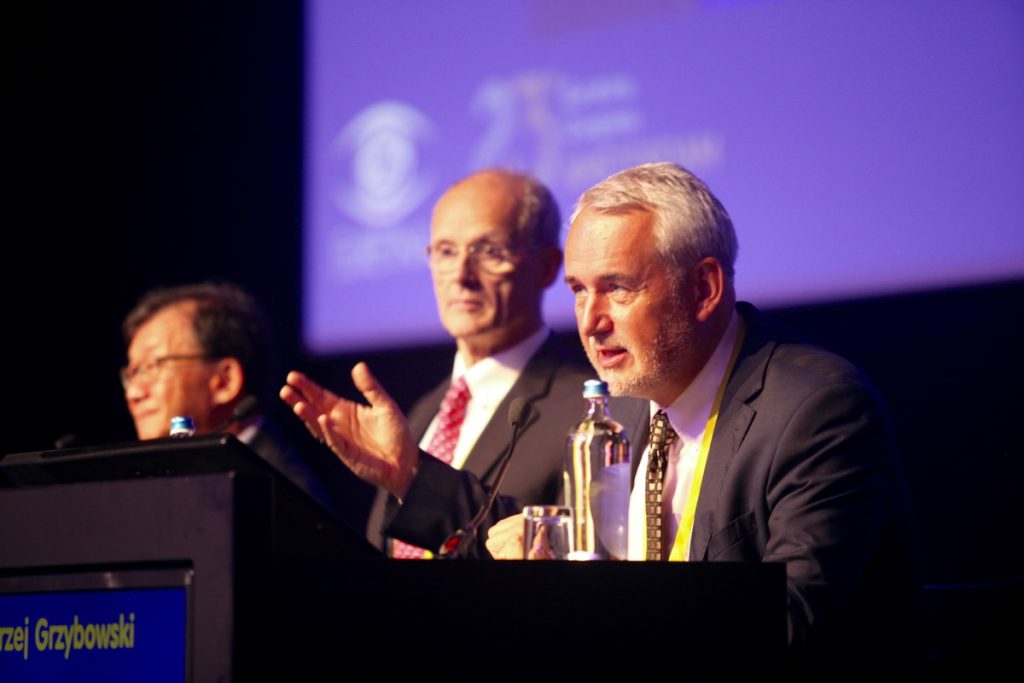If current trends continue, one out of every two people on the planet will be myopic by the year 2050.
Even more worryingly, a significant proportion of these will be highly myopic with all the associated problems that entails in terms of ocular morbidity, disease and vision loss, according to a number of speakers at the European Association for Vision and Eye Research (EVER) symposium session on high myopia.
The speakers noted that high myopia is a key risk factor for conditions such as myopic macular degeneration, staphyloma, cataract and glaucoma, among others.
However, ophthalmologists and health authorities are not powerless in the fight to stem the tide of the coming epidemic, pointed out Andrzej Grzybowski MD, PhD who chaired the session along with Jost Jonas MD.
“It is important to highlight as a starting point that due to the environmental risk factors, myopia is partly preventable. As doctors and retina experts, we should be the source of this knowledge in our societies, otherwise the transfer of this knowledge to parents, schools, and the general public will be much longer,” he said.
Dr Grzybowski said that a range of treatments such as atropine, soft contact lenses with myopia control features, orthokeratology and repeated low-level red light (RLRL) therapy are available and may be deployed in tandem with measures encouraging children to spend more time outdoors and limit near work.
“We do have methods even if they are not perfect to help to control myopia. As retina specialists, we do not deal with the issue that often, but we should be aware and refer parents to the paediatric ophthalmologists who can provide the appropriate treatment. I think we need to emphasise the message that every dioptre matters,” he said.
Jost Jonas MD discussed the complex epidemiology, histology and risk factors of myopia and high myopia. He noted that there is further axial elongation in adult highly myopic eyes, which is one of the most important risk factors for progression of myopic macular degeneration. He also highlighted the role of Bruch’s membrane in the complex process of emmetropisation and myopisation, with myopic axial elongation of the globe potentially influenced by an enlargement of Bruch’s membrane in the equatorial and retro-equatorial region of the eye. Dr Jonas concluded that all highly myopic eyes usually have some degree of optic nerve damage, whether non-glaucomatous, glaucoma-like or glaucomatous, unless the contrary has been proven in the individual patient.
Turning to the complications of pathologic myopia (PM) Kyoko Ohno-Matsui MD, PhD, said that PM was ranked as the second to fifth most common cause of blindness in several major studies of white populations and was the most common cause in two major studies from China and Japan respectively.
“Blindness in PM is usually caused by myopic maculopathy, especially myopic macular neovascularization (MNV), myopic traction maculopathy, glaucoma or myopic optic neuropathy,” she said.
Anti-VEGF therapy and vitrectomy are effective to treat myopic MNV and myopic macular retinoschisis (MRS), but development of macular atrophy is a long-term issue for MNV. Glaucoma is often overlooked and underdiagnosed in PM and needs rigorous follow-up, she advised. In the future, new therapies to prevent the progression of staphyloma are expected to be introduced.
Rounding off the symposium, Calvin C.P. Pang MD discussed the efforts currently being made in China to prevent myopia progression through a national integrated programme. The programme includes measures such as reduced homework for children, family education to encourage outdoor activities and limit screen and reading time.
This session is available to registered attendees on demand.


